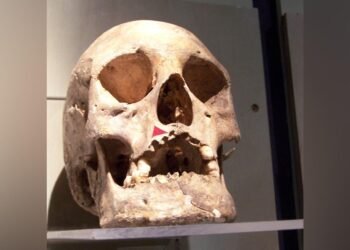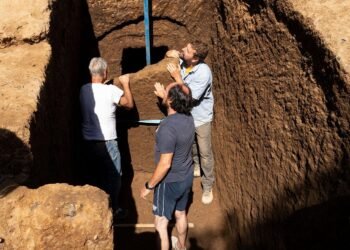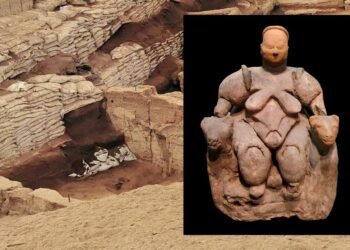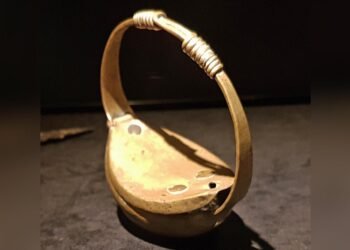A groundbreaking discovery at White Sands National Park in New Mexico suggests that prehistoric humans used primitive transport technology over 20,000 years ago. Scientists have found drag marks next to ancient human footprints, showing the earliest evidence of how early North American settlers moved heavy loads before they invented the wheel.

The research, led by Professor Matthew Bennett from Bournemouth University and published in Quaternary Science Advances, documents a series of parallel and single-line drag marks. These tracks, preserved in dried mud and covered by sediment, are believed to have been left by a travois—a simple transport device made of two wooden poles tied together. Indigenous groups across North America used the travois to carry goods throughout history, and this new find suggests the technology existed thousands of years earlier than previously thought.
“We know that our earliest ancestors must have used some form of transport to carry their possessions as they migrated around the world, but evidence in the form of wooden vehicles has rotted away,” said Professor Bennett. “These drag marks give us the first indication of how they moved heavy and bulky loads around before wheeled vehicles existed.”
The tracks vary in length, with some reaching up to 50 meters (165 feet). Researchers identified two main types of marks: a single line from two poles joined at one end, and two parallel lines created by an X-shaped travois. Footprints alongside the marks hint that humans, not animals, pulled the travois. Children’s footprints often appear near the drag marks, suggesting they walked beside the adults similarly to how families today move together while carrying loads.

Professor Bennett compared the scene to a familiar modern image: “Many people will be familiar with pushing a shopping trolley around a supermarket, moving from location to location with children hanging on. This appears to be the ancient equivalent but without wheels.”
To check their findings, the team built travois replicas and dragged them across mudflats in Dorset, UK, and on the Maine coast, USA. The tests showed that the mud marks resembled the fossilized drag marks at White Sands.

Dr. Sally Reynolds, a co-author of the study and a paleontologist at Bournemouth University, said: “Every discovery at White Sands adds to our understanding of the lives of the first people to settle in the Americas. These people were the first migrants to travel to North America, and understanding more about how they moved around is vital to telling their story.”
The finding of the travois suggests that people came to North America earlier than we previously thought. Previous research at White Sands has uncovered human footprints that go back 23,000 years, pushing the timeline of human settlement in the Americas back by thousands of years. This goes against the old belief that humans entered the continent about 15,000 years ago.

Some experts still argue about the exact dating of these findings, but the evidence for early transport technology remains clear. Professor Bennett pointed out that travois marks across several locations in White Sands National Park indicate that this transport technique was common among prehistoric people.
The research highlights the ingenuity of early humans, who found efficient ways to transport goods long before wheels or domesticated animals for labor existed.

























About the travois marks at white sands:
When I was a kid I would often cut a smallish tree and suspend bags and packs from it. I would drag this over one shoulder and when that side tired I would switch shoulders. Dragging things from the hands near waist height tired the arms much faster and increased how much of the tree was causing friction on the ground.
I would suggest that the single marks may have been of the type I once used through the forest of Washington state.